Tire Buying Guides
Free shipping
Best price guarantee
Special pricing
Financing with Resolve
Easy returns
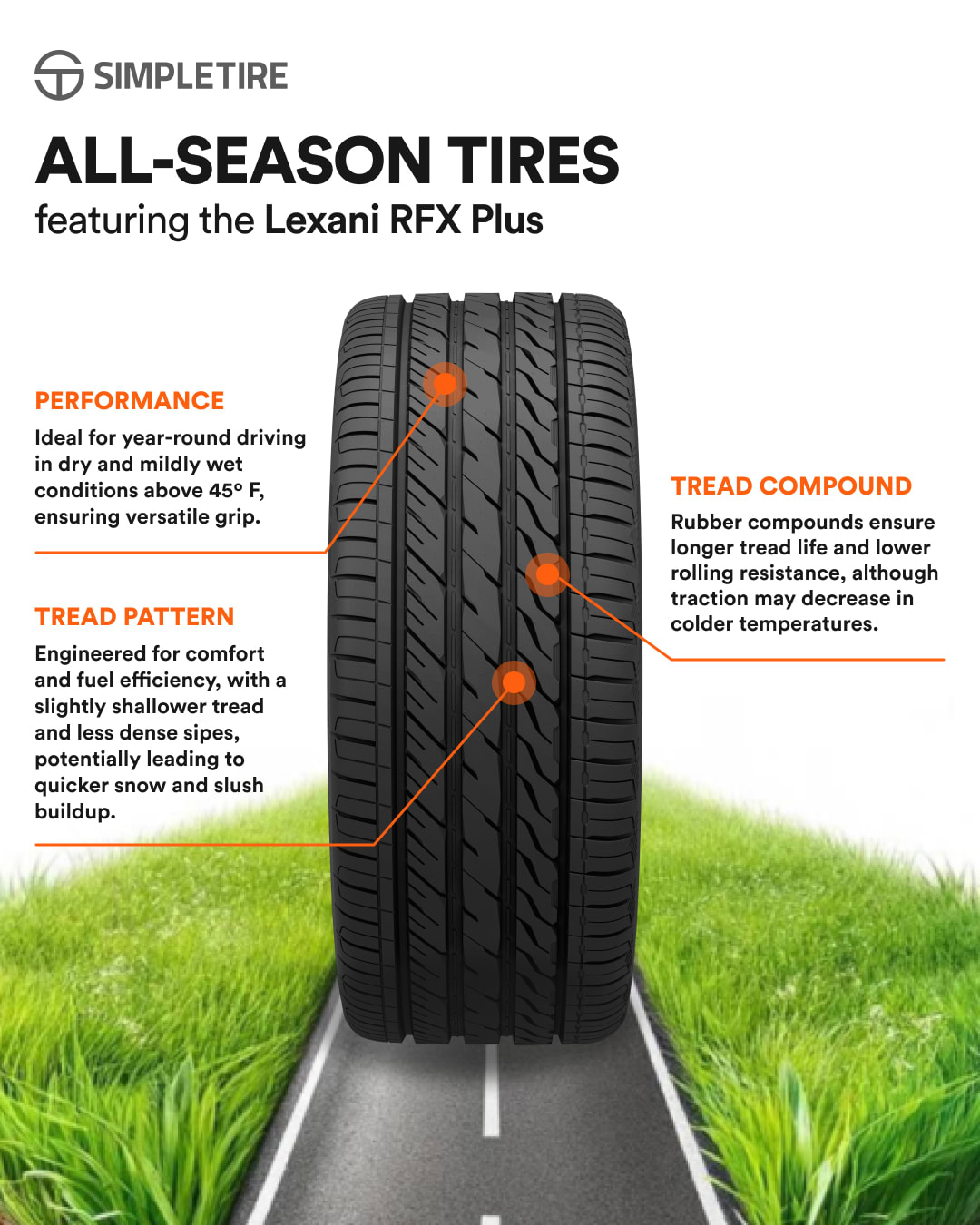
Most drivers face a fundamental challenge: finding tires that perform reliably throughout the year without the hassle and expense of seasonal changes. All-season tires have emerged as the practical solution for millions of vehicle owners who need dependable performance in varying weather conditions.
The technology behind all-season tires represents decades of engineering innovation aimed at creating a single tire that can handle everything from summer heat to light winter snow. These versatile tires now equip more than half of all vehicles on American roads, offering a balance of safety, comfort, and value that matches the needs of everyday driving.
Understanding how all-season tires work — and when they're the right choice — helps drivers make informed decisions about their vehicle's most critical safety component. The choice between all-season, winter, or summer tires impacts not only your driving experience but also your wallet and peace of mind throughout the year.
What Are All-Season Tires?
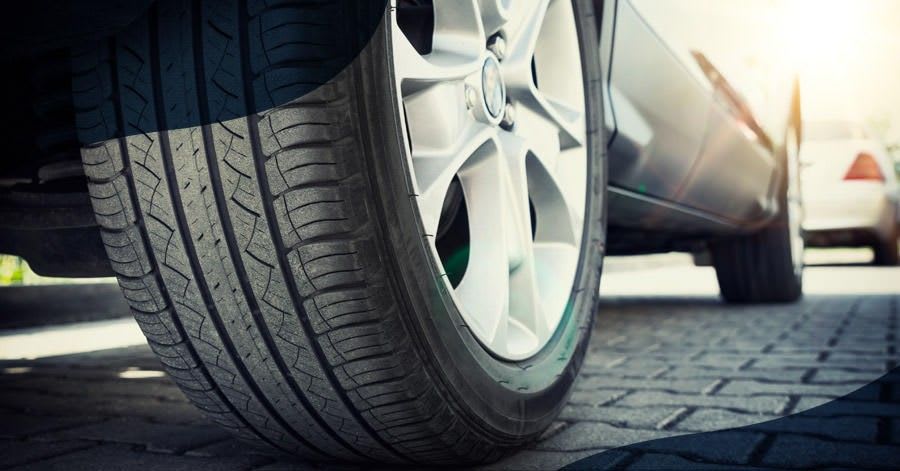
Definition and Key Features
All-season tires represent an engineering compromise that delivers year-round functionality by combining the best attributes of summer and winter tire designs. These tires feature moderate tread depths — typically between 8/32" and 11/32" when new — that strike a balance between the shallow grooves of summer tires and the deep, aggressive patterns of winter tires. The result: a tire that handles diverse conditions without excelling in any particular environment.
The rubber compounds in all-season tires contain special polymers and silica blends that maintain flexibility in cold temperatures while resisting excessive wear in summer heat. Look for the Mud + Snow (M+S) marking on the sidewall — this designation indicates the tire meets industry standards for light snow traction. The tread patterns feature a combination of circumferential grooves for water evacuation, lateral notches for snow bite, and solid shoulder blocks for dry road stability.
How They Differ From Other Tire Types
The rubber compound formula sets all-season tires apart from their seasonal counterparts. While winter tires use extremely soft compounds that stay pliable below freezing, all-season compounds maintain a middle ground — harder than winter rubber but softer than the heat-resistant materials in summer tires. This balanced approach allows the tire to function adequately across a temperature range from approximately 40°F to 100°F.
All-season tread designs incorporate several key elements:
- Moderate siping: Small slits in the tread blocks provide edge grip without compromising block stability
- Variable pitch patterns: Different-sized tread blocks reduce road noise and improve ride comfort
- Symmetric or asymmetric designs: Allow for regular rotation patterns to maximize tire life
- Continuous center ribs: Enhance straight-line stability and steering response
The construction differs significantly from specialized tires. Summer tires prioritize maximum road contact with minimal tread depth and large, uninterrupted tread blocks. Winter tires feature aggressive siping, wide grooves, and sometimes studdable designs for ice traction. All-season tires blend these opposing characteristics: enough void space to handle water and light snow, yet sufficient rubber contact for dry road performance.
How Do All-Season Tires Work?
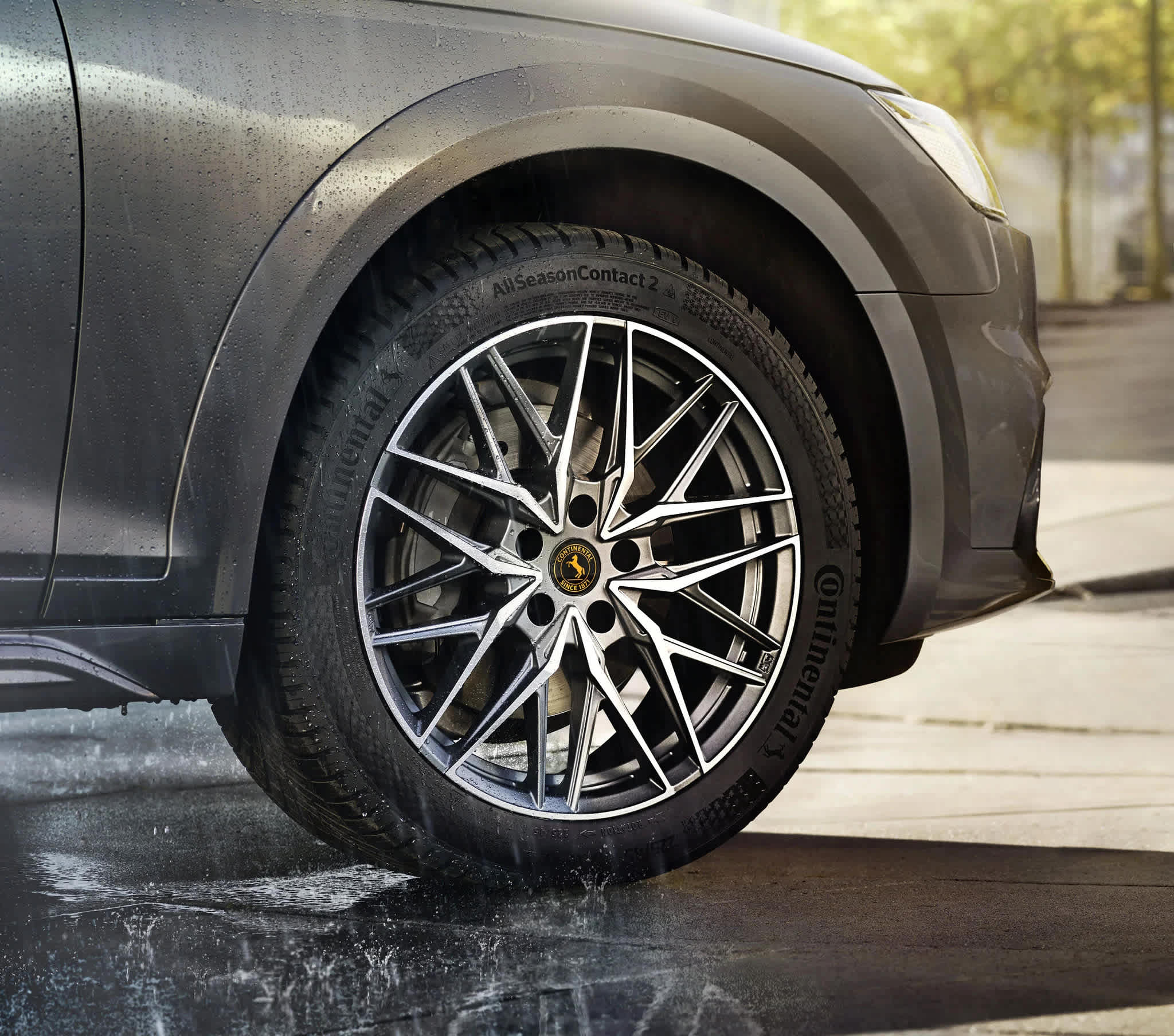
Tread Design Technology
All-season tires achieve flexibility through a thoughtful tread configuration that caters to a variety of driving scenarios. The tread design balances traction and longevity, offering effective maneuverability in light snow while ensuring reliable dry road handling. By maintaining a reasonable depth, these tires resist premature wear typically seen in more aggressive tread patterns.
Key to the all-season tire's effectiveness are the channels that guide water away from the tire's surface. These pathways reduce the risk of hydroplaning, enhancing safety on wet roads. Alongside these channels, lateral grooves and notches aid in dispersing snow and slush, increasing grip in light winter conditions. The tread patterns also focus on minimizing noise, ensuring that drives remain smooth and comfortable, even at highway speeds.
Rubber Compound Science
The compounds in all-season tires are crafted to address the dual demands of hot and cold conditions. These materials are engineered to retain pliability in cooler temperatures, ensuring grip without sacrificing durability during warmer months. The blend offers a compromise that handles heat effectively while adapting to chillier climates.
This compound formulation ensures even wear across different temperatures, contributing to the tire's lifespan. This consistency in performance offers drivers a dependable option that doesn't necessitate frequent replacements, providing reassurance throughout the seasons.
Temperature Adaptation
Temperature adaptation defines the versatility of all-season tires, allowing them to function effectively across diverse climates. These tires perform well in environments where mild temperature fluctuations occur, ensuring steady traction and stability. However, below freezing, the tire's flexibility diminishes, reducing its effectiveness compared to winter-specific options.
In extremely hot conditions, these tires may experience accelerated wear compared to those designed specifically for summer. Thus, they are ideal for areas with moderate and predictable seasonal changes, delivering consistent performance without the need for frequent swaps.
When Should You Use All-Season Tires?

Ideal Weather Conditions
All-season tires are best suited for areas where weather patterns are generally mild. They thrive in climates where frost and snow are rare, maintaining grip and stability in wet or dry conditions. These tires are designed to function efficiently when temperatures remain above freezing, making them a solid choice for those who experience mild winters without severe cold snaps.
Driving Situations That Benefit Most
For drivers who navigate city streets or suburban roads, all-season tires offer a reliable option. They're ideal for everyday driving, providing dependable performance on highways and during commutes where weather conditions don't require specialized tires. In regions where winter is gentle and snow is infrequent, these tires eliminate the inconvenience of swapping sets, delivering year-round usability and peace of mind.
Geographic Considerations
All-season tires fit perfectly in southern and coastal regions, where harsh winter conditions are seldom encountered. They are effective in locales with four distinct, yet gentle, seasons. In contrast, they may not suffice in mountainous areas known for heavy snowfall. When considering all-season tires, evaluate your local climate and typical routes to ensure they match your driving environment.
What Are the Benefits of All-Season Tires?
Year-Round Convenience
All-season tires simplify tire maintenance by allowing drivers to use a single set throughout the year. This approach eliminates the logistical challenges of seasonal tire changes, such as scheduling appointments or finding space for off-season storage. With a dependable performance across various conditions, drivers can enjoy uninterrupted driving without the need for adjustments or adaptations to different tire types.
Cost Effectiveness
Opting for all-season tires can significantly reduce the financial burden associated with tire maintenance. Unlike purchasing multiple sets of tires for different seasons, investing in all-season tires represents a one-time expenditure that covers a broad range of driving conditions. Their durable design ensures that these tires often outlast winter-specific options when used primarily on dry surfaces, lowering the frequency of replacements and associated costs.
Versatile Performance
The adaptability of all-season tires makes them a valuable choice for drivers facing varied weather patterns. Engineered to provide stable traction in both wet and dry environments, these tires offer a harmonious blend of performance attributes. Enhanced rolling resistance contributes to fuel savings, while the design ensures a smooth, quiet ride for daily commutes. This versatility in performance meets the needs of drivers who require consistent reliability and comfort in their everyday travels.
How Do All-Season Tires Compare to Other Tire Types?
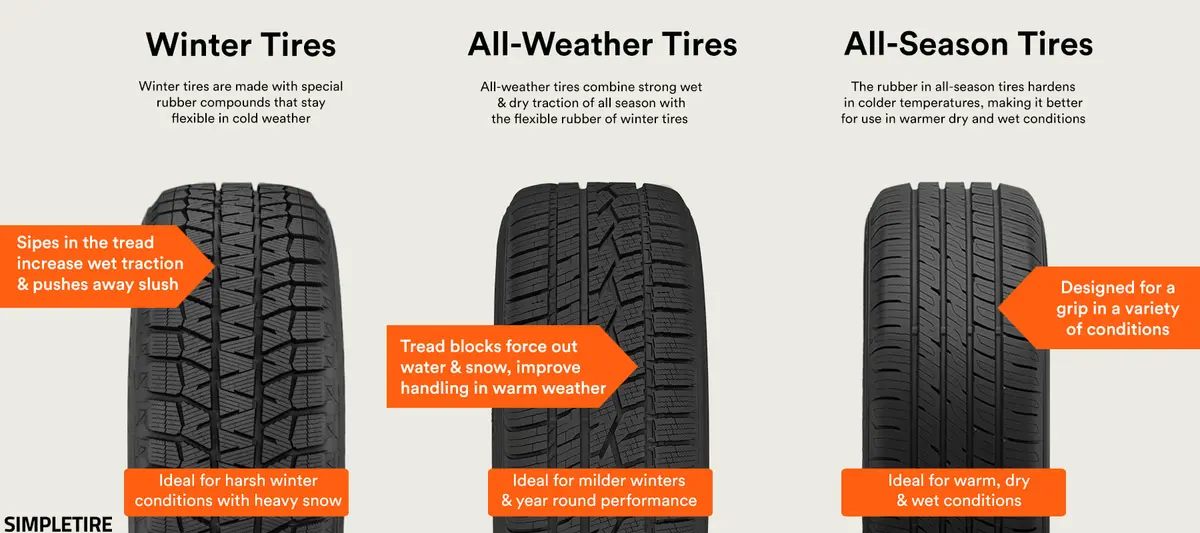
All-Season vs Winter Tires
When examining the differences between all-season and winter tires, it's important to note their distinct purposes. Winter tires are specifically engineered for cold weather, featuring tread designs that grip effectively on snow and ice. The rubber compounds in winter tires resist hardening in low temperatures, ensuring they perform optimally during the coldest months. However, they can wear down quickly if used in warmer weather. All-season tires, on the other hand, offer a more versatile approach, providing acceptable performance in light snow while maintaining durability and traction in moderate climates.
All-Season vs Summer Tires
All-season tires and summer tires cater to different driving conditions and priorities. Summer tires are crafted for superior handling in warm weather, offering enhanced road grip and precise steering due to their unique tread patterns. These tires excel in dry and wet conditions during summer months but become less effective as temperatures drop. All-season tires, while sacrificing some peak performance in hot conditions, provide a broader range of use. They adapt well to varying climates, delivering consistent performance without the need for seasonal changes.
All-Season vs All-Weather Tires
The distinction between all-season and all-weather tires lies in their adaptability to different climates. All-weather tires, identified by the Three-Peak Mountain Snowflake (3PMSF) symbol, are designed for more demanding winter conditions, offering reliable traction in heavier snow and colder temperatures. They serve as a robust alternative for drivers in regions with harsher winters. All-season tires, marked with the Mud + Snow (M+S) designation, offer a balance of longevity and everyday utility, making them ideal for drivers in regions with mild winters seeking a year-round solution. While all-weather tires may entail a higher initial cost, their enhanced winter capabilities can justify the investment in colder areas.
Can All-Season Tires Handle Snow and Ice?
Light Snow Performance
All-season tires offer reliable performance in mild winter conditions, ideal for regions where snowfall is limited. They can effectively navigate through snow accumulations of up to 2-3 inches, maintaining stability on wet and cold roads. These tires work best on roads that have been treated to remove significant snow coverage, ensuring safer travel during infrequent winter storms in areas with moderate weather.
Limitations in Winter Conditions
In severe winter weather, all-season tires encounter challenges that can affect performance. Snow and slush can clog the tread channels, compromising traction. When temperatures drop significantly, the tire compounds become less flexible, diminishing their grip on icy surfaces. This leads to longer stopping distances, which can increase safety risks on ice-laden roads, making them unsuitable for regular winter driving when conditions fall below 40°F.
When to Consider Winter Tires Instead
Switching to winter tires becomes essential in certain conditions where enhanced traction is crucial. If you often drive in areas where snow exceeds 4 inches or in consistently freezing temperatures, winter tires provide superior grip. They are also recommended for traversing unplowed roads or mountainous regions, where their design offers better stability. Additionally, some regions have regulations that require winter-rated tires during the colder months to ensure road safety.
How to Choose All-Season Tires
Understanding Tire Specifications
Choosing the right all-season tire requires a close look at the specifications that define its performance and suitability for your vehicle. Begin with the load index, which indicates how much weight a tire can safely carry. Ensuring this aligns with your vehicle’s requirements is critical for maintaining both safety and tire longevity. Additionally, pay attention to the speed rating—this tells you the maximum speed the tire can handle without compromising safety, and should match your driving style and conditions.
Look into the Uniform Tire Quality Grade (UTQG) ratings to gain insights into treadwear, traction, and temperature handling. A higher treadwear number typically means the tire will last longer, while traction grades (AA to C) provide information on stopping power on wet surfaces. Also, evaluate the manufacturer's warranty as an indicator of quality and potential mileage expectancy.
Matching Tires to Your Vehicle
Ensure compatibility by referring to your vehicle’s owner’s manual, which lists the recommended tire sizes and types. This step is crucial for preserving your vehicle’s handling and performance. Different vehicles, whether they are sedans, SUVs, or trucks, have unique requirements based on design and usage, affecting the suitability of all-season tires.
Consider your driving habits and usual road conditions. For instance, frequent highway travel may benefit from tires with low rolling resistance for better fuel efficiency. Conversely, if urban driving with variable weather is common, opt for tires known for their adaptability in all-weather conditions. This targeted approach helps refine choices to those best suited for your needs.
Key Features to Look For
When selecting all-season tires, focus on features that enhance their overall performance. Look for tires with deep circumferential grooves; these improve water evacuation and minimize hydroplaning risks, which is essential for safety in rainy conditions. Adequate siping is also important as it offers grip on light snow, making the tires versatile across different weather scenarios.
Durability is a key factor—reinforced sidewalls can help the tire endure impacts and rough road conditions without sacrificing ride quality. Additionally, consider tires with low rolling resistance, which not only boost fuel efficiency but also support a more environmentally friendly driving experience. Choosing a tire that incorporates these features ensures a dependable and efficient ride throughout the year.
How to Maintain All-Season Tires for Maximum Life
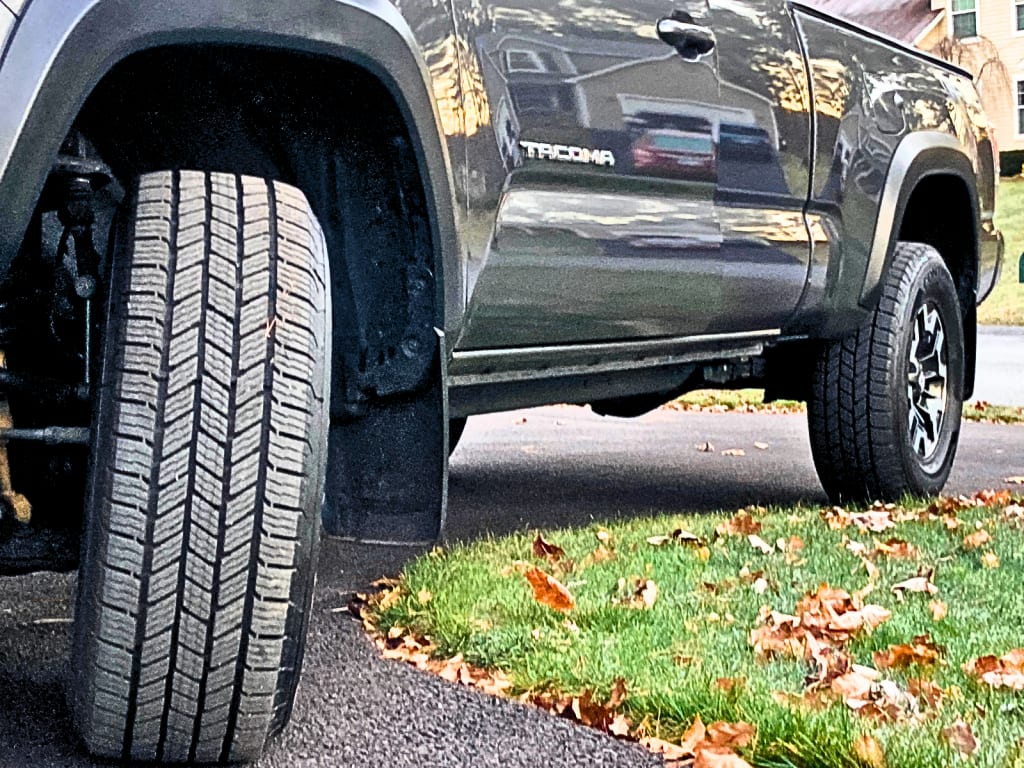
Regular Inspection and Rotation
To maximize the lifespan of all-season tires, consistent maintenance is essential. Start by setting a routine for rotating the tires approximately every 6,000 miles. This ensures the tread wears evenly, which is crucial for maintaining traction and extending the tire's usability. Each month, use a reliable method to assess tread depth, staying alert for signs that indicate the need for replacement.
Remain attentive to any irregular wear patterns, as these may suggest alignment issues needing correction. Regularly inspect the tires for visible damage such as cuts or bulges, and remove any debris lodged within the tread. Addressing these issues early can prevent safety hazards and extend the tire's service life.
Proper Inflation and Alignment
Correct tire pressure is vital for optimal performance and longevity. Check tire pressure monthly, especially when the tires are cool, to ensure the readings are accurate. Consult your vehicle's manual for the precise PSI levels appropriate for your model—proper inflation supports even wear and enhances fuel efficiency.
Alignment has a significant impact on tire maintenance. Ensure alignment checks are part of your annual routine or scheduled after any notable impacts, like running over a pothole. Misalignment can lead to uneven tire wear and impaired vehicle handling. Pay attention to any signs of steering difficulty or unusual vibrations, as these could indicate alignment issues requiring professional assessment.
Seasonal Care Tips
Maintaining all-season tires involves more than just periodic inspections. Regularly clean the tires to eliminate road grime and residue that could degrade the rubber. If you switch to winter tires in colder months, store your all-season tires correctly to shield them from environmental harm. Store them in a stable, dry environment away from direct sunlight to prevent the rubber from deteriorating.
Avoid exposing the tires to extreme temperatures, as this can hasten wear and affect their structural integrity. Consider treatments or protectants specifically designed to preserve the rubber compounds, keeping the tires flexible and prolonging their lifespan. These maintenance strategies ensure your all-season tires remain effective, providing a secure and smooth driving experience throughout their duration.
All-season tires offer the perfect balance of convenience, performance, and value for drivers who need reliable year-round traction without the hassle of seasonal tire changes. By understanding how these versatile tires work and when they're most effective, you can make an informed decision that keeps you safe and comfortable on the road throughout the year. When you're ready to find the ideal all-season tires for your vehicle, we make it easy to shop for tires online and find the best deals with free shipping directly to your door or preferred installer.
Ready to find the perfect tires?
Search By